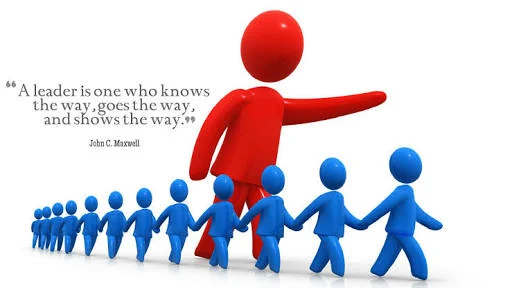Leader Should Give Party To Motivate People
 |
| Leadership |
The definition of leader or leadership is to “inspire, influence and guide others to participate in a common effort.” Good leaders don’t just bark orders or hand out directives with no explanation. Instead they use effective communication and motivation techniques to facilitate action by their teams. Leaders that inspire and motivate their teams solicit input from employees, keep team members informed, give timely and specific feedback regarding job performance, ensure training needs are met and hold employees accountable.
Veterinary practices with positive leadership are more likely to have effective management, rewarding cultures and productive teams. Although some individuals have natural talent and excellent leadership skills, all practice owners and managers can learn to become better leaders.
What is Motivation for the leader ?
Motivation is a word that is tossed around a lot—motivation to lose weight, to accomplish more and to do just about anything!
But what is motivation? Motivation is what drives people to success. Think about people who are motivated to lose weight—the more driven they are, the greater success they have.
Motivation plays a critical role in employee productivity, quality and speed of work. Leaders are typically held accountable to motivate their team, which is quite challenging. In fact, it is difficult for leaders to motivate their employees, because people are already motivated. The question then is not whether someone is motivated, but why they are motivated and what they are motivated to do.
 |
| Leader |
The following two factors that are very often affect when employees lack motivation by the leader.
Oftentimes leaders focus on extrinsic motivation, which means individuals are focused on an external incentive. This type of motivation occurs when a person is motivated to perform a behavior or activity in order to earn a reward or avoid a punishment. For example, if someone exceeds the sales quota, a bonus may be in store, but if the sales quota is missed by a significant amount, the result might be termination.
On the other hand, intrinsic motivation occurs when people are motivated to perform a behavior or activity because it is personally rewarding. They may engage in an activity for its own sake rather than a desire for some external reward. An example of this is employees who stay late to finalize a deliverable because they find the work fun and interesting. Intrinsic motivation is when individuals want to do something. Extrinsic motivation is when somebody else tries to make them do something.
Leaders today really need to make a mindshift change from focusing solely on extrinsic to creating an environment that is both intrinsically satisfying and extrinsically encouraging. Daniel Pink explains in his book, “Drive: The Surprising Truth About What Motivates Us,” that “the secret to performance and satisfaction—at work, at school, and at home—is the deeply human need to direct our own lives, to learn and create new things, and to do better by ourselves and our world.”
Essentially, the drive for success comes from within. This means that leaders must learn how to tap into why their employees are motivated and for what.
THE MAIN ROLE OF LEADER
Make sure you fulfill the following critical roles of a leader to drive the success of your practice.
 |
| Leadership role |
Be an Effective Role Model
Demonstrate the behavior desired from the rest of the healthcare team. Practice owners that display outbursts of anger, make snap decisions with no regard to the potential outcome for the staff, demonstrate uncaring attitudes, show favoritism for some employees, withhold information from the staff, procrastinate on important decisions, tolerate lack of accountability, demonstrate inconsistencies in client service or fail to listen to their employees will not be as respected by the team and likely will not be as successful in achieving their business goals.
Delegate and Empower
Good leaders surround themselves with the right people in the right jobs. This facilitates being able to lead rather than manage. For practice owners, this starts by hiring an effective manager or administrator. Depending on the size of the practice, an office manager, a practice manager or a hospital administrator is the highest management position. Practice owners need to begin the process of effective delegation and empowerment with this individual. All too often, veterinary practices don’t have a practice manager with the necessary skills for their position or the practice owner unwittingly sabotages this person’s success by overloading them with responsibility or neglecting to empower them to achieve practice goals.
Effective Time Management
Part of being an effective leader includes effective time management. If you spend most of your time fielding complaints and reacting to problems, this may be a sign that you are not delegating effectively or empowering team members. Read some books or articles on time management and create action steps to improve.
Establish Effective Organizational Structure and Communication Protocols
Set up a clearly defined organizational structure which includes an organizational chart outlining the chain of command and protocols for effective communication. Members of the healthcare team need to understand who they report to when they have questions or concerns. To facilitate effective communication and efficiency, develop communication protocols. Many practices find it helpful to use email, hospital newsletters, and memos to augment their one-on-one communication and staff meeting interactions. The type of communication method utilized should be appropriate for the content of the message. Memos are fine to convey announcements and information on minor issues. Face-to-face meetings are necessary to discuss important issues or convey information that is sensitive or may result in questions.
Conclusion
However, we can conclude that leadership is the ability to direct a group of people in realising a common goal. This is done by people applying their leadership attributes. Leaders create commitment and enthusiasm amongst followers to achieve goals.
There is a common belief that leadership is vital for effective organizational and societal functioning and success
Leadership is achieved through interaction between leader, follower and environment.






0 Comments